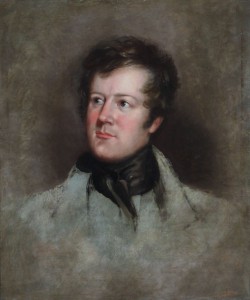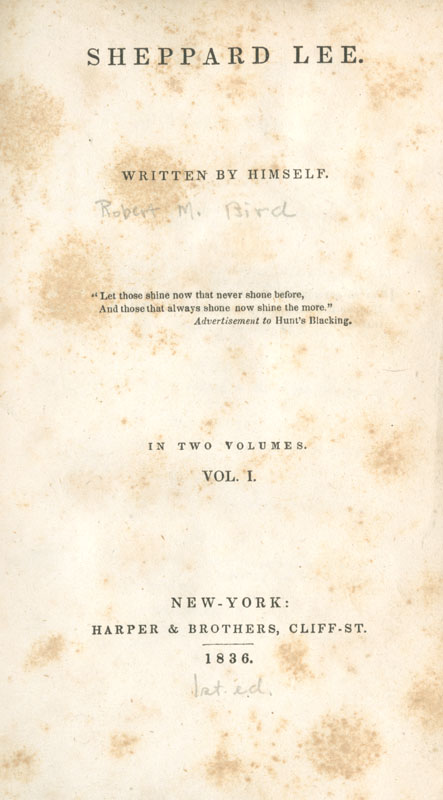Sheppard Lee
Essay

Sheppard Lee, a novel published in 1836 by Philadelphia author, playwright, and physician Robert Montgomery Bird (1806-54), is a narrative of the wandering soul of an indolent, down-on-his-luck farmer. Although fairly successful in its time and even receiving a rave review from the master of the American Gothic, Edgar Allan Poe, the book largely disappeared from public memory until the early 2000s.
Set in Philadelphia, the novel contains the extraordinary account of Jerseyman Sheppard Lee’s soul repeatedly migrating into the bodies of recently deceased acquaintances. Accidentally at first, but soon actively bringing about these transformations, the narrator’s spirit enters a number of radically different characters and temporarily acts out their role in the fabric of the city. In the hope of attaining in someone else’s life the happiness he feels missing in his own, Lee becomes a gout-afflicted squire, a womanizing dandy of Chestnut Street, a bitter money lender, an idealistic philanthropist, a rich man driven mad by indigestion, and even a Virginian slave. When in the body of these figures (referred to by Lee as his “prototypes”), the narrator adopts their habits, beliefs, and sense of status, permitting the novel to satirize them from within. From exposing the empty ennui of the elite to ridiculing quixotic Quakerism as well as showing the city’s duplicitous relationship with its slave-holding neighbors, Bird’s novel points a mocking finger at some of the very pillars upholding the City of Brotherly Love in the early 1800s.
When switching bodies, the narrator again and again lapses into what he refers to as “philosophizing,” allowing him to reflect on the relationship of the mind to the “fleshy matrix” surrounding it. In moments like these, Bird has his protagonist address actual biomedical concerns of the time—with the author’s professional background frequently playing into the narrative. For almost every embodiment of Lee, for example, we meet a new doctor-character, including a psychiatrist and even a galvinist (who resurrects corpses using electricity).

Weaving together its narrative from a multitude of cultural perspectives, dialects, and genres (the gothic, satire, slave narrative and science fiction, among others), Sheppard Lee is often described as ahead of its time, and arguably anticipates literary strategies more commonly associated with the late twentieth century (postmodernism in particular). On the other hand, many of Lee’s incarnations throughout the novel echo core concerns of its era (such as upward mobility, materialism, abolitionism, and spiritualism), and some even appear to be based on concrete historical events. For instance, the kidnapping of Lee in the body of a northern philanthropist calls to mind the attempted 1835 lynching of abolitionist William Lloyd Garrison (1805-79) in Boston, and the story of a slave revolt in Lee’s account of “Nigger Tom” (a likely inspiration for Harriet Beecher Stowe’s Uncle Tom’s Cabin) closely follows the 1831 rebellion of Nat Turner (1800-31) in Virginia. Newspapers of the day even listed a “Sheppard Lee” as injured by friendly fire during the Turner rebellion—a coincidence, most certainly, but still eerily reminiscent of the elusive, hapless protagonist of this peculiar collection of tales.
Although long neglected, Sheppard Lee became regarded in the twenty-first century as one of the literary masterpieces of the early American Republic and secured its writer a place among Philadelphia’s leading literati.
Stefan Schöberlein is a doctoral candidate at the English Department of the University of Iowa and the managing editor of the Walt Whitman Quarterly Review. (Author information current at time of publication.)
Copyright 2015, Rutgers University




